A spirit of restoration is afoot in the East Coast Village of Victoria and the movement is being led by the Victoria Reconstruction Trust (VRT). A principle member of the VRT, Desmond Saul, and other Victorian residents are working to “recover some of what we have lost.”
“Victoria was one of the premier villages but over the years and changing circumstances… we are at that stage where once we were leaders but now we are laggers,” Saul says. With the VRT, Saul hopes to develop the community and bring it back to its former glory.
A village of firsts
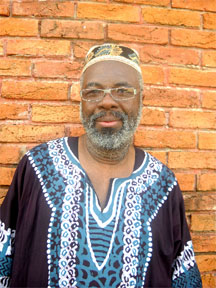
Victoria village is significant in Guyana’s history. It was the very first village to be established following the abolition of slavery. Victoria was a cotton plantation according to Saul.
On November 7, 1839 83 freed slaves pooled their money and purchased the plantation. According to Abraham Poole, another member of VRT, the ex-slaves were a “determined set of people” who developed a constitution following the purchase of the defunct plantation.
This was another first for any village. “That constitution addresses every conceivable thing at a time when there was no local government,” Poole said.
Victoria is also said to be the first village along the East Coast to have street lights. The village was also a leader in ground provisions and fruits and once had thriving industries in coconut and cassava.
‘Village life in Victoria is very hard’
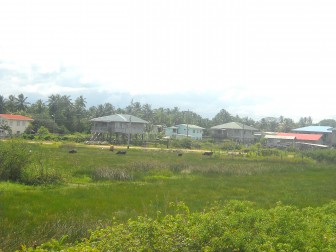
Today, the residents are calling for more attention in terms of development in the community.
Located some 17 miles from Georgetown, Victoria today is a village of approximately 3000 people. And for Cheryl McKoy, “Village life in Victoria is very hard. You have to work hard; you don’t get nothing easy.”
A single parent, McKoy says she has lived in Victoria all her life. While she admits that the village has seen some development like paved roads, “when the rain fall the water in ya yard.”
Victoria suffers from flooding during intense rainfall. Residents say it is a consequence of poor drainage, and although the government has offered assistance, the people believe that more can be done for the village. “I think we need better drainage. The bushes need cleaning,” McKoy said. The woman said that often she would mobilise residents to clean the area, but she believes that the regional authority should employ persons within the village to do this. “We have people here who need jobs,” she stressed.
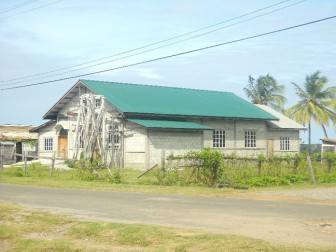
The need for jobs is a sentiment that every Victorian shares. “Victoria was an industrial village; we had twenty something factories grinding oil but now there is not much happening,” says shop owner Winslow George.
George, who was once a farmer told this newspaper, “We are a hard-working people in this village but we need assistance. The government help us we get water, roads and lights, but we need employment.” George suggested opening a sewing business for young people.
He believed that if the government invested in some sewing machines to teach young girls and even boys how to sew, then they could sew for the community and earn a living in the process. Another resident present pointed out that there is a technical school that teaches school leavers, but George believes that young people need to learn a skill that can directly benefit the community as well.
GRECO
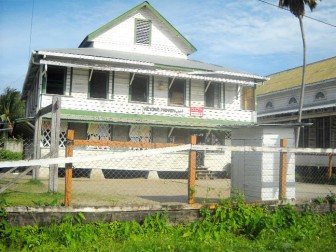
Located in the area referred to as seaside Victoria is the GRECO Training Centre. Desmond Saul, principal of the institution noted that the school was started “out of observation for the need to get youths off the street.” The school helps young people “recover some of their reading and writing skills and teach them a marketable skill.”
Young people from as far as Mahica and Beterverwagting along the East Coat attend the school. Saul stated that the school offers a one year programme where students learn skills such as electronics, engineering and the like. They spend 10 months in the classroom and two months as interns in various businesses across the country.
Saul boasted that the school has produced electricians and engineers that are serving both the community and businesses such as GuySuCo. However, he noted that some students take more than a year to complete the course because of the intense remedial work that they have to put in.
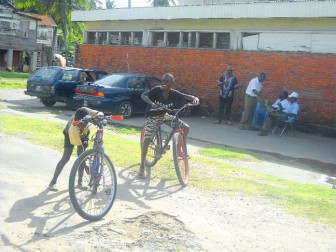
Meanwhile the building that the school is located in holds significance for the community as well. As Abraham Poole, a lecturer at the institution put it, “There is a tremendous pride in this industry.”
According to Poole a resident of Victoria had returned from London, England after having studied electronics and established the Guyana Radio Electronic Company (GRECO). Poole explained that community land was set aside for the construction of the building and with government assistance, 60 persons from the community were employed at the factory putting together radios. The company was closed some years later.
Out of pride for Uriel Assanah, the founder of GRECO, the building was used for the technical school and the name lives on.
Monuments
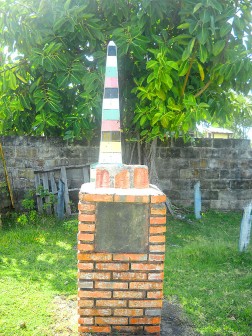
The GRECO building is not the only piece of history that still dots Victoria. Across the road in a community centre are two monuments: one in honour of the persons who bought the village and one to mark the independence of the village.
There is also the Syndell Park. The community playground today is used for football and is overgrown with bushes around the edges and protected by a zinc fence. The park, according to Poole, is where the first ever Agricultural Fair was held. The VRT is hoping to re-enact that fair for the village’s 175th anniversary, Poole said.
Many residents point out the need for more recreational activities in the community and some development works on Syndell Park. In front of the Park is the Wilberforce Congre-gational Church. A concrete structure now where a wooden shingled building stood, Saul noted that back in the days of slavery, enslaved workers from as far as Buxton walked along the dam to attend service.
He said it was a shame to lose the wooden structure, but the church kept the bell tower and the design of the previous building. The VRT is working to ensure that historic sites such as the church and the park are properly maintained.
Meanwhile there are plans to construct another monument in the village to mark the anniversary. This monument will be constructed by Ivor Thom, sculptor and a resident of Victoria.
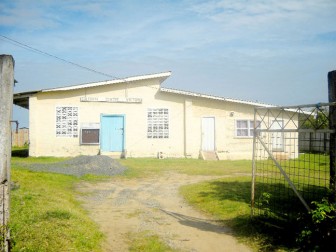
Thom is best known for creating the Burnham Mausoleum in the Botanical Gardens as well as the Damon Monument in Essequibo. According to the sculptor, he realised his talents as a sculptor back in the ’60s when the village was affected by a great flood.
“There was a lot of mud and I use to play in the mud and I realised that I could make things,” he said. But the work he is most proud of is bust of Burnham located in Kitty. Explaining why, he said, “I just got back from Cuba where I studied and I had to convince the Guyanese people that I could do it. I had difficulty getting material and I was moulding somebody that everybody knew so I had to do it right. In the end they were all satisfied.”
Victoria Backdam
Victoria is a village divided into the Seaside and the Backdam, with two sideline dams. Over on the seaside, it is mostly residential. Residents there are involved in shopkeeping, or have farms in the backdam, or practise garden farming and subsistence poultry rearing. There is a community centre, a nursery school and Syndell Park on this side of Victoria.
Leaving Seaside and crossing into what is referred to as South Victoria, the area is bustling with life. There are persons constructing homes, shops and people milling about; the only primary school in the village is located in South Victoria. There is another nursery school located further down in the village.
However, children have to attend secondary schools in nearby villages. There is a cemetery upon entering South Victoria with an old wooden church at the front.
As one drives further down the main road in the village the metropolis like appearance gives way to a more rural atmosphere, where the roads are dotted with potholes and people are busy cleaning their yards or sitting on their bridge reading a newspaper.
Children play cricket in open fields. Land space is large and bush is plentiful. This part is referred to as Victoria Backdam. As one resident pointed out, “it is like another village by itself.” Mostly farmers live along the backdam and the West and East sideline dams.
Small shops dot the area and a few sweet stands are set the roadside. Inside some of these shops men play dominos, while others are just milling around with a drink in hand. Children in unfenced yards chase each other around. A canter selling vegetables and ground provisions is flocked by women.
Disease
Farmers in the backdam are involved in subsistence farming and large-scale farming. Cash crops such as calaloo, pak choi and cucumber, eschallot and such are farmed in backyards while plantains, bananas and other provisions are farmed on large acreages further down behind the village.
Access to these large-scale farms is via small boats in the canals, while trenches are dug for irrigation purposes. With a recently installed Water Users Association farmers say that drains are cleaned on a monthly basis. But many plantain and banana farmers fear for their livelihoods as a disease is attacking their crop causing the leaves of the tree to fall off and stunting growth in their fruit.
“This is a big set back for me. I tek out 10 arces land to fuh plantain and banana but is mainly the plantain that this thing affecting. The tree them ain’t get no leaves the leaves dropping off,” says Kevin Hinds.
This disease has been a bother for farmers for nearly a year now Hinds noted. “The agriculture people come and say cut off the leaves but when ya cut it off wha lef?” Hinds asked, going on to say that even young suckers are being affected.
For the trees that are bearing the fruit does not fully develop Hinds said. The Ministry of Agricul-ture had provided drugs to treat the disease, however after that is used up it is up to the farmers to find the drugs on their own, he said.
The drugs in question cost $4,000 a bottle. “This hey is we living… if I get lil assistance with the drugs I can continue. I got three acres now coming out…” Hinds said he has no other choice but to continue farming, but expressed the hope that things will get better.
Another farmer, Herbert Lewis, said that the same thing is affecting him. “Farmers when they hear this they ain’t going in the fields,” Andrews stated.





